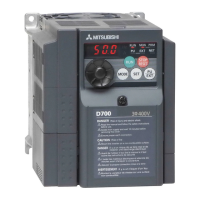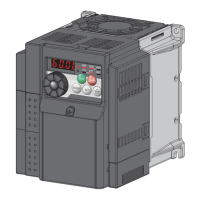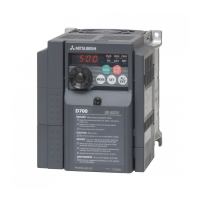What does PU stop mean on Mitsubishi Electric FR-D720-2.2K?
- NNathaniel RyanSep 3, 2025
Stop with of the PU is set in Pr. 75 Reset selection/disconnected PU detection/PU stop selection. Turn the start signal OFF and release with .

What does PU stop mean on Mitsubishi Electric FR-D720-2.2K?
Stop with of the PU is set in Pr. 75 Reset selection/disconnected PU detection/PU stop selection. Turn the start signal OFF and release with .
| Series | FR-D700 |
|---|---|
| Model | FR-D720-2.2K |
| Rated Output Power | 2.2 kW |
| Rated Output Capacity | 2.2 kW |
| Frequency Range | 0.5-400 Hz |
| Applicable Motor Capacity | 2.2 kW |
| Protection Level | IP20 |
| Protective Structure | Open type |
| Overload Capacity | 150% for 60 seconds |
| Weight | 1.5 kg |
| Output Frequency Range | 0.5 to 400 Hz |
| Protection Features | Overcurrent, Overvoltage, Undervoltage |
| Input Voltage | 3-phase 200 to 240 V |
| Output Voltage | 3-phase 200 to 240 V |
| Control Method | Soft-PWM control/high carrier frequency PWM control (V/F control, advanced optimum torque control, vector control) |
Details on verifying inverter contents, identifying parts, and checking the serial number for order accuracy and integrity.
Illustrates the terminal connection diagrams for both main and control circuits, including power supply and motor wiring configurations.
Details the specifications for main circuit terminals, including power input, inverter output, brake resistor, and DC reactor connections.
Explains the functions, ratings, and connections for control circuit terminals, including input signals, output signals, communication, and safety stop.
Outlines critical safety instructions, handling procedures, wiring precautions, and operational considerations to prevent product damage or accidents.
Provides a comprehensive list of all inverter parameters, their functions, setting ranges, initial values, and cross-references for detailed information.
Explains how to adjust motor torque, starting torque, and low-speed torque using manual torque boost and magnetic flux vector control.
Covers motor protection methods like electronic thermal O/L relay and PTC thermistor protection, and how to apply auto-tuning for optimal motor performance.
Explains how to assign functions to input and output terminals, configure communication, and manage safety stop signals.
Describes functions for automatic restart after power failures and power-failure deceleration stop to ensure continuous operation or safe shutdown.
Explains how to configure retry operations, phase loss protection, and earth fault detection to manage and recover from faults.
Explains how to reset the inverter after a fault occurs, including procedures for different reset methods and clearing integrated thermal data.
Provides a comprehensive list of error messages, warnings, alarms, and faults displayed by the inverter, with corresponding page references.
Details common causes for error messages, warnings, and faults, along with specific corrective actions to resolve the issues.












